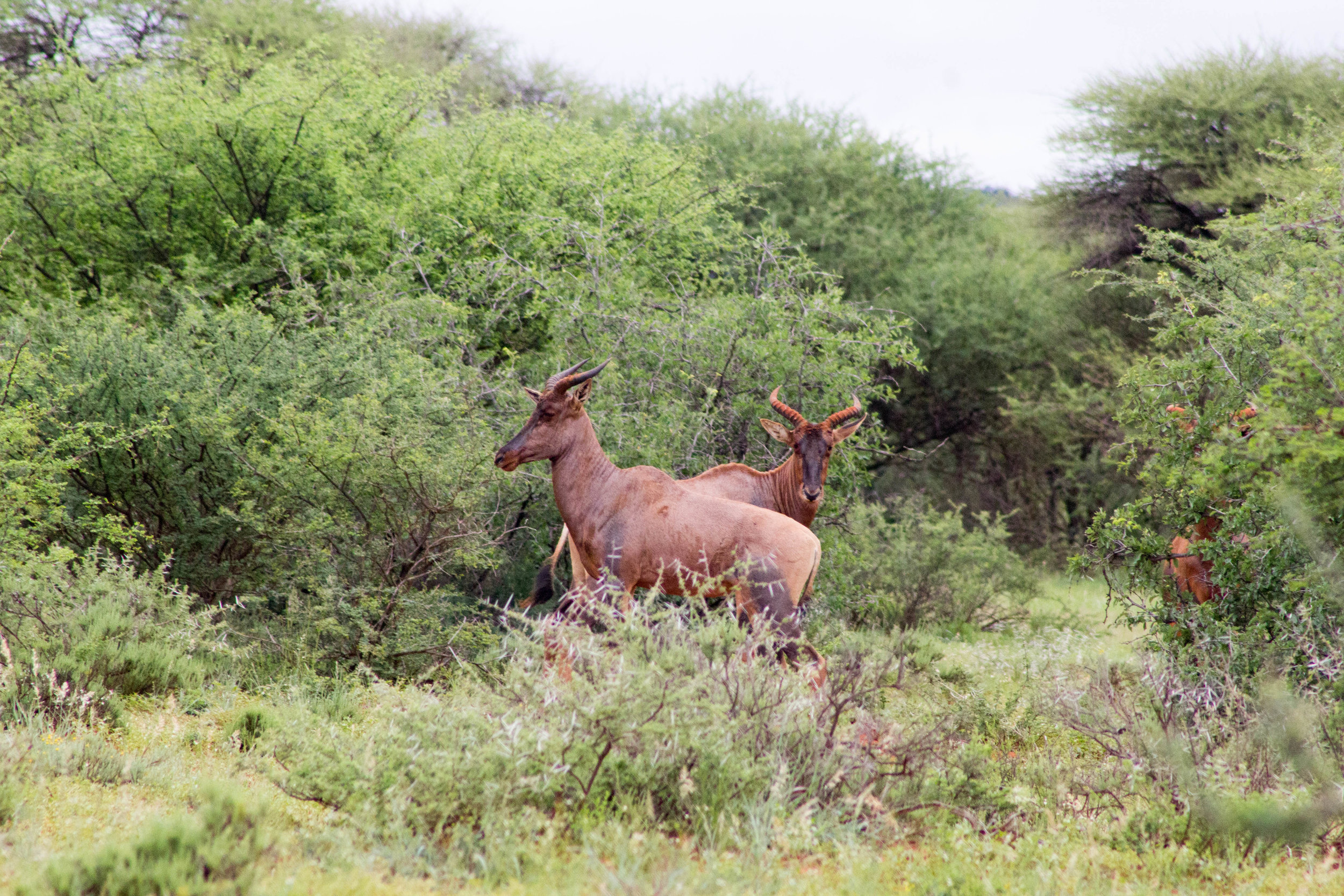Taking the long way round: Joburg to Cape Town
Many people quickly dismiss the 1,500 km drive from Joburg to Cape Town, which crosses the Great Karoo in the centre of South Africa, as too long and arduous to bother with. Why spend 30 hours on the road when you can pick up a round-trip flight for around R2500? I differ - I love the freedom of the open road, the changing scenery and the ability to explore places off the beaten track.
In February, Kate and I stayed with my parents in a beach house in idyllic Churchaven, situated inside the West Coast National. As we are based in Joburg and had a wedding in Cape Town the weekend before we were due to rent the house, I saw this as an opportunity to explore the lesser known parts of South Africa by road. And as a bonus, my Mum asked to tag along.
We planned to do the drive over two days, with a shorter first day and a longer second. We set off from home at midday and headed south, crossing the Vaal River, entering the wide-open spaces of the Free State. Here we left the national highway and headed on side roads through a thunderstorm to the small forgotten Karoo town of Philipolis.
The road to Die Groenhuis in Philipolis
Philipolis was a former mission station founded in 1823 for the local Khoi people in the then-British held Orange River Colony, making it one of the oldest settlements in the Free State. A once prosperous agricultural town, it used the be on the main road from Joburg to Cape Town. When the national highway was constructed in the 1960s it just missed the tiny speck on the map, passing 60km west of the town and taking much of the trade and industry away.
It feels like the pause button was pressed when the highway was built, creating a quiet and haunting traditional South African “dorp”.
We stayed at Die Groenhuis, a series of renovated Karoo Cottages set along a dirt road that leads out of town overlooking cattle fields. We were welcomed by Jens, who remembered me from when I passed through in 2013, when doing the same journey. He had lots of stories to tell about the delights of the small town and its history, which I think were the same stories he told me when I last visited.
We took a walk around the town when we arrived to stretch our legs. We got chatting to a local about the town and its history. He very proudly told us that "no white women had ever been raped in Philipolis" and we were completely safe. We didn’t really have an answer to that.
Restaurants in Philipolis are few and far between. Jens gave us the contact details for Elwina (+27 73 878 6820) who runs a small café, Sielskos. She does excellent dinners for travellers – strictly by appointment only – at her small café on the main street. We enjoyed a chicken pie and lamb, while we enjoyed a few drinks and listened to the nearby stream running in full flood after the storms
We ate in the courtyard of the café, which is also a monument to Laurens Van Der Post. Philipolis is the birthplace of the famous writer and conservationist. Coincidentally as part of his colourful life, he was also a dairy farmer near to where I grew up in the English countryside.
"I came to live my life not by conscious plan or pre-arranged design but as someone following the flight of a bird." - Laurens van der Post
The next morning, we had a quick coffee overlooking the wetland at the back of the cottages and hit the road. We re-joined the highway at Colesberg, where we stopped for the obligatory Wimpy bacon sandwich.
After Colesberg the Great Karoo opened up before us, with its vast spaces and imposing mountains. In colonial times, the Karoo formed an almost impenetrable barrier to the interior from Cape Town due to the hostility of the environment, extreme heat, lack of water and shade.
Today, it’s a magnificent drive through a desert landscape that has been largely unchanged for thousands of years. If we had more time an overnight stay at one of the many Karoo farms offering accommodation or at the Karoo National Park would be well worth it.
Nearer the end of the drive, we stopped for lunch at Matjiesfontein, a storybook town set in one of the driest parts of the Karoo.
The village is situated along the main railway line from the diamond fields of Kimberley to Cape Town and is just off the main highway. It’s a great place to stop for lunch and admire the Victorian architecture.
Matjiesfontein was founded by an entrepreneurial Scot, John Molteno, who created a Victorian health resort, based around the Lord Milner Hotel and the Karoo’s clean air. Again, a night at the quirky Lord Milner and a few beers at its pub is recommended, if you have the time.
Unfortunately, we had to press on with Cape Town in our sites. We left the Karoo behind us, crossing the Cape fold mountains via the dramatic Hex River Valley. In the space of two hours, we drove through vast open desert, jagged mountains and vineyards.
We eventually arrived in Cape Town glad that we hadn’t flown but had driven savouring South Africa’s landscapes.
The way back
On the way back, a week later, I was solo and went a different way. I headed back via the N12 and Kimberley, rather than the N1 and Bloemfontein.
This time round I could enjoy the peace and solitude of driving alone through the desert. The quieter N12 allowed me to relax and enjoy the view, rather than having to worry about constantly overtaking trucks.
I spent the night camping at Mokala National Park, South Africa’s newest park. I camped at Motswedi campsite, which overlooks a waterhole. There are only six sites at the camp which is set amongst camel thorn trees. Each has its own kitchen, shower and loo block, giving each camp some luxury and privacy.
The camp has a true wilderness feel. There is only an ankle high electric fence to keep buffalo out and the other member of the Big Five that call the reserve home.
I arrived at the camp, via flooded sand roads, in the pouring rain. I struggled as I put my new tent up getting soaked and cursing myself for not being more sensible and opting for a chalet at the main camp.
Home for the night at the Motswedi campsite.
I retreated to the kitchen block to wait out the storm and then hopped in a hot shower thanks to the solar geyser. Eventually the rain stopped and I lit a fire. I sat on a picnic bench listening to the chorus of frogs where I enjoyed an entire borewors for myself, happy I had not chickened out and opted for a chalet.
Despite the rain, the inside of my tent was dry and the only thing to wake me in the night was a hippo munching on the green grass around my tent.
I woke up on the morning of my 29th birthday and drove through the park taking 4x4 roads, eventually heading out the park via the Lilydale Gate.
On my game drive, I saw Oryx, Springbok, Tsessebbe, Red Hartebeest, Eland, Kudu and Zebra, as well as plenty of unusual birds. I left Mokala feeling that it needs more exploring as part of another adventure. Perhaps some fly-fishing in the Riet River?
After leaving I headed north to Kimberley and then on to Joburg through driving rain, along flooded back roads of various quality and through endless fields of tall green mielie and forgotten farming towns.
Road trip reading list:
- Deep South: Four Seasons on Back Roads by Paul Theroux
- Leaving Before the Rains Come by Alexandra Fuller









